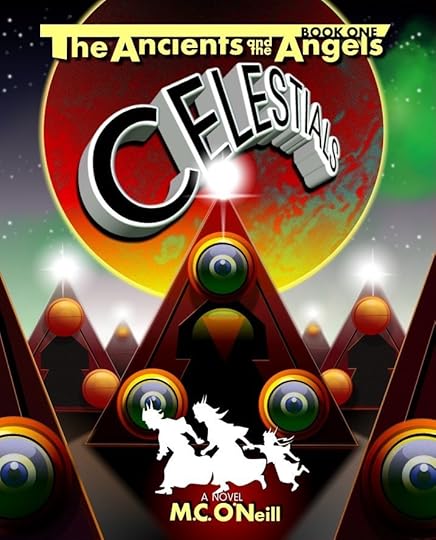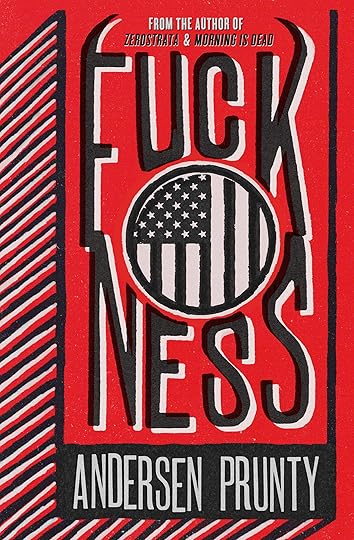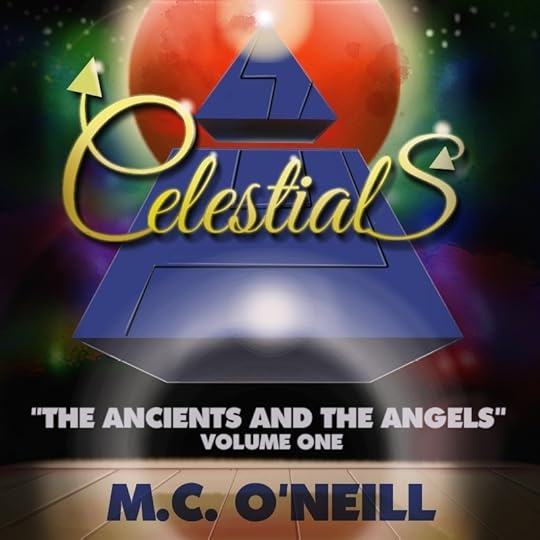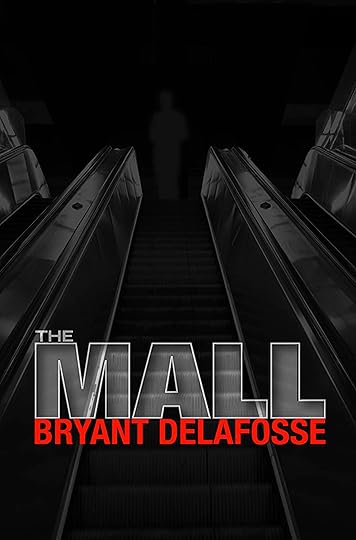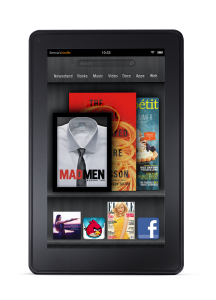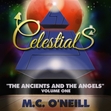M.C. O'Neill's Blog, page 6
September 22, 2012
Make All Their Dreams Alive (or not?)
On the topic of writing for fantasy and science fiction, there is a fine line in regard to what details, you, as the author, should be aware.
As a master of fine art in painting and design, one issue with image-making my classmates (students and colleagues) at my school had frequently glossed over had been the factors of focus and the level of rendition. How detailed should one portion of the composition be in contrast to another? Sometimes that’s a tough question; elements such as distance, weather and atmosphere could cloud or denature the portion in question.
When writing fantasy and science fiction, it isn’t quite as involved. I would always err on less being more for these genres. Some of the best sci-fi/fantasy out there refuses tight, painstaking descriptions of featured technologies, creatures and otherworldly designs, not just for eyeflow and pace, but for one inherent attribute of those genres – fantasy.
J.R.R. Tolkien didn’t go into explicit description of the Nazgul or the orcs. All we knew was that they were big, bad, dark and twisted elves. Stygian boogeymen that wanted the main characters roasted on a spit. Good enough.
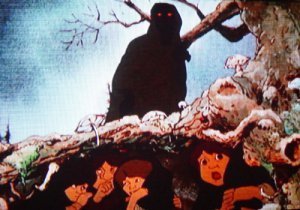
Not a lot, but fantastic!
Why is this important? When you read fantasy, the goal is not to simply enjoy fiction, but to fantasize. I, as the author, cannot do that for you, dear reader. Sure, the cover illustration can impose the overall tone and mood of the mystical setting nestled in between the preface and afterward, but you, as the reader, must use your imagination to fully appreciate the experience of whatever guidelines the author had set as a basis – a springboard – for your mind’s eye. It will make a profound reading experience for your audience when you go minimal with the glitz and gloss. Not too minimal, or else you’ll only confuse your readers unless they have an immense tooth for imagination. Don’t assume they do, but don’t hand it to them on a platter either. You’ll ruin the story’s beat.
Horror is a different matter altogether. I employ many elements of horror in my writing as it punctuates my plots. Horror is visceral. You must, with a surgeon’s scalpel, at these points render the grue and the gore, the stink and the terror and woe of your horrific scene. Go crazy in describing the sweaty, fat cannibal who sings in a high-pitched shrill and reeks of spoiled milk (ugh). Horror is a mood while fantasy is a state of mind, and ultimately, a chore. Your chore as a reader. Again, I cannot do that for you as the writer.
It’s like upshifting and downshifting a car. When your fantasy must delve into horror, punch up the detail, and then put on the brakes when the fear settles. H.P. Lovecraft was a master at crossing these genres. When the elements of fantasy confronted the protagonist, he would describe these wondrous monsters in abstract terms, and so, the terror in which the stories were set mutated into surreal fantasy. His Elder Gods defied description because they were physically unknown to humanity. They were fantasy. We all fear the unknown in some ways and, as such, Lovecraft’s fantasy fell back into horror because of that. Like I said, it’s a fine line.
Give your audience what they want – the work of fantasizing. You, the author are the boss and your readers must make the product.


September 21, 2012
Shameless Self-Promotion
My Goodreads review of The Ancients and the Angels: Celestials.
Well, I wrote the book and I must say it’s a labor of love. Currently in it’s revised form with updated typesetting for better readability, it is available in trade paperback and Kindle editions.
Although the title may connote a religious-based work, the story is indeed a secular romance for the young adult audience.
It does deal with themes of mysticism and theosophical spirituality, but these topics are easy for the uninitiated reader to digest.
With humble, suburban beginnings, the drama unfolds across the earth (and Mars!) and even beyond our prime reality.
Read “Celestials” and you’ll enjoy a combination of planetary, paranormal romance, elegant horror and science fiction culminating into a series of epic battles with the very soil of the earth as the prize.
It’s a soapy space opera. Perhaps a spacey soap opera.
Look for The Ancients and the Angles Volume 2: Archons later this year!


Andersen Prunty and “The Fuckness”
I was a drug counselor in Middletown, Ohio for three years. It’s smack-dab in between Dayton and Cinci. Why do you think they call it Middletown anyway?? My clientele were of the adolescent intensive outpatient population. I almost feel I have a personal connection to this story because I believe it takes place there with these kinds of children.
Andersen knows his lay of the land. Middletown (Middleton, here) is like Mos Eisley in Ohio. A hive of scum and villainy.
Hang on before you hate on me for saying this (truth be told, I don’t care if you do).
The tiny city is a perfect experiment of squeezing the dirt-poor right next door to Ohio Royalty. The former are bullied by society in general to believe that they have nothing ever – EVER – to look forward to and the latter thought that Bush Junior was the best-durn thang that done ever happened to these here U S’s of A.
Prunty focuses on the former – a boy with sweet F.A. in his future or his present. He’s weird and nobody at his podunk school likes him. His parents beat the holy hell out of him on a regular basis. Then one day, they give it to him good – he gets the horns.
Time to kill. The gods of Po’ White Trash have chosen him to get rid of all of his shackles, murder his moron parents, steal the nearest riding lawnmower and go find himself so he can defeat The Fuckness.
Knowing Middletown like I do, it would take a bizarre adventure for the less-than-honeyed to ever hope to bust through the Van Allen belts of hate and despair and allow the last shred of your own personality to shine in the end.
Andersen Prunty is the Graham Greene of the 21st Century and this novel is a testament to that. I know many may think those are tall words for a Bizarro author, but he is so in touch with the human condition that he can take genre and truly examine humanity at its worst – but for the best.


September 20, 2012
“Hater” Re-review.
Royal Manaball reviews are so much better than my original Amazon postings because I can add links and pretty pictures. Just thought I’d throw that out.
This review focuses on David Moody’s classic tale of apocalyptic rage simply called Hater. It’s the first of an epic trilogy and nothing less than a page turner. It’s distinctively a British novel, but not like in a Jane Austen way. This book has balls (ahem, I meant bollocks).
I am currently being followed by Mr. Moody on Goodreads, and frankly, this little factoid is keeping me up at night. After all, here is his photo:
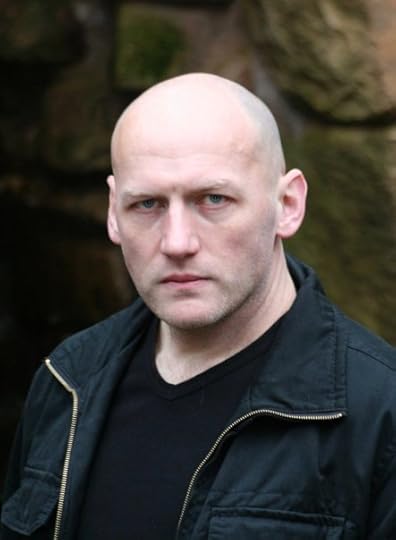
Author David Moody. Secretly a fan of The Cure?
Right. Anyway, my original Amazon review of this amazing, and quite unnerving novel begins as follows:
Many survival/post-apocalypse works focus on a person or group who is “fully-prepped” and ready to rock against (insert world-killer here). Not the main character of Hater. Danny is a regular schmuck who pushes files all day that go off somewhere to be filed – again. The only military training he possesses is the ability to fling paperclips dead-center into your eyeball. He probably listened to The Cure in high school. Hell, he probably still does. Unlike novels such as Patriots where the characters have been preparing for (insert world-killer here) since Reagan was president, Danny can barely make it to payday. He’s like so many of us and I enjoy that aspect about him. David Moody really illustrates this well and it brings humanity to a hero that so many of these kinds of novels render as a cartoon (think Duke Nuke’em). Read this and you will most likely identify with the guy on some level. Not to spoil, but later on, fate tips the tables in Danny’s favor which color him blood red. At that point, the novel becomes a frightening commentary on the service-sector, post-industrial lemminghood that has been forced upon so many of us. Wonderful read!
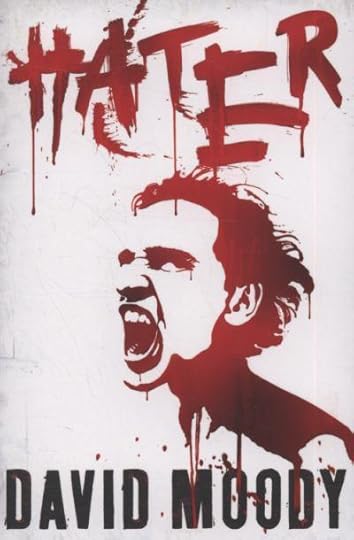
HAAAATE!!!
A well-deserved five stars. The rest of the series is great and I still need to check out his proper zombie series “Autumn.”


September 19, 2012
Yeah, I’m on Goodreads Now. Awesome.
Whoo-hoo! I am finally an official Goodreads author! My first novel, The Ancients and the Angels: Celestials, has finally garnered me Goodreads authorship! The site gives your presence as an author a pretty good overview. It allows you not only to network with other readers but other authors. Already I’m being followed by up-and-coming literary names like Zoe Saadia, David Moody and Rachel Morgan.
An author can post his/her blog to the newsfeed, receive announcements, post giveaways, post personal events and readings or any public appearances. You can link to your sales page or any other point-of-purchase to drive more customers to your book. This is a great opportunity to break the ice and gather a legion of readers to your fanbase. Authorship grants so many other privileges that I haven’t yet explored because there are so many available!
Plus, Goodreads hosts a wellspring of groups, many of them tailored to the genre for which you write. Including Bizarro! On these you can introduce yourself and everyone will be in awe at the Author’s Badge on your profile. Members will throw little golden pickles at you in reverence whilst you bask in narcissistic glory.
But seriously, this is a great promotional tool for authors, especially if you are indie/small press. So, if you have indeed written and published and you want to get the message of your book out there, sign up for the Goodreads Author program to drive those results home!
First, you will need to join the Goodreads Librarian Group and request your title to be listed. Follow their directions and then you will be able to apply for an author’s status. That’s about all there is to it. At first I was a bit confused and daunted as to how to navigate the site and make authorship happen, but if you follow my directions above, you won’t have that problem. As I’ve posted before, I’m my own canary in the coal mine.
Give Goodreads a look and see how it can help you grow as an author and a reader!


Dare you enter…”The Mall.”
Originally from my Amazon Post:
Film director John Carpenter used a system with his movies where he would create an amazing exposition. An “okay, here’s the situation” device that would suck the viewer into whatever world it was he had created. I personally love that aspect of his films and Bryant Delafosse’s The Mall makes heavy use of it.
Okay, here’s the situation…
Lara Myers is in a pickle. The economy is tanking and she is a widow who is barely making ends meet as an administrative assistant. With two kids in tow, she is horrified to find out that her landlords have foreclosed on her apartment and her key to the front door no longer works. It would just so happen that her deceased husband was her lifeline to society and her options for help are limited. The only route for a remedy lies with her mother-in-law – who, unfortunately, hates her guts.
This old dowager lives in a fully-automated condo atop a just as fully-automated megamall. The structure is a behemoth of commerce that stretches for miles outside of a Texan megacity. I can’t help but think of the gargantuan Costco featured in the movie Idiocracy. Yeah, that big. After a mishap between her children and the crone’s android dog, Lara’s pickle gets all the more bitter. With no place to call home, the remains of the Myers family must spend the night in The Mall…
Delafosse can not only illustrate an intriguing lay of the land, but his characters are quite believable in their reactions to an array of devilish situations. That’s a refreshing use of literature, because so many science fiction writers focus so much on the milieu and not on the emotions and minds of the cast. The Mall is like J.G. Ballard’s High Rise with a heart, and this is presented to the reader as the protagonist is so vulnerable. I’m not sure if this is an indie publication, but I doubt mainstream publishers would take a chance on featuring such a main character. After all, this story takes place on a family’s first night of homelessness. Naturally, horror.
Another interesting aspect is the book’s timeline. At first, I thought it was about twenty minutes into the future as everything is automated and androids are accepted as commonplace. They have the internet (but it is a bit different from ours) and a flourishing economy on its last legs. But why in the hell are The Goonies and Back to the Future brand-new movies? After some brilliant revelations, we realize that the novel takes place in an alternate 1980′s! An alternate 1985 if I’m not mistaken. This world enjoyed a 1960′s dominated by eight years of JFK and a robotic heyday of the 1970′s. How cool is that?
The plot has not only elements of sci-fi, but delves into the supernatural. The book is a smorgasbord of genres, but I did not get lost in the cavalcade of…cool horror. I don’t know what else to call it. The twists and turns are there, but not in an M. Night Shyamalan fashion and I felt that they were handled elegantly.
Grammar fascists will wince at some of the typos, but I felt that the story itself overrode that and I could forgive them. But for those foibles, I would give the book five stars for character, plot, an incredible setting and Delafosse’s ability to conjure suspense. These characters really have their work cut out for them as they attempt to survive The Mall.


September 18, 2012
With Sympathy. With Empathy. NCK& Friends
Time to get deep now. I pretty much have to as this post focuses on spirituality and this is the controlling factor of our lives whether you are conscious of it or not. I write books for the YA market that deal with my perceived anchors of spirituality for young women, and that is an important concern for such inner growth in them. It’s a grand time for the building of the hermetic self of a young woman – and we all know as human animals what a powerful source of progress they are to our society (as we know it).
To let you know, I define my “religion” as Unitarian Theosophist. Although born and raised Roman (Irish) Catholic, I had taken that faith as a stepping stone into another spiritual realm as I had discovered more about the inner workings of my formative religious path. Kabbalah, as this podcast dissects, is scary to many. Some of the fearful types out there may even brand it as “evil.” Not so. It’s just old. That’s it! Many human faiths refer to it or aspects of it and have re-uptaken its tenants into their own. Remember, humanity is over 200,000 years young and we are masters at mixing up the messages.
NCK& Friends is a wonderful podcast that I think you all should listen to. There is a wellspring of great interviews on the site and you can pick and choose what you want to hear and take the rest home in a (spiritual) doggie bag.
The interview with life-coach Tracy Crossley was excellent. It examined the nature of sympathetic magicks that have been employed unto her clients for good or ill. Kabbalah is very powerful in that it is a practice of magick that can be persuasive whether it be used for beneficent or malevolent means. It is a source of persuasion and that is why many fear it. As it draws on the powers of extra-dimensional entities, one can be influenced either for love or fear depending on the individual. It can make another do something and practitioners of it can choose to wield it for the helpful or the foul. Either way, we unwittingly use it every day. Have you ever written a check? Or a note on the refrigerator? Sure, and what you have done is spelled. Yes, you are a practitioner of magick now! Congratulations, you have cast a spell! You have caused something in your environment to change. Something to happen. You have influenced another.
And that’s Kabbalah! That’s all there is to it at the basic level. Our literacy and our social allowances have blessed us with such a great time to be alive because our tools and knowledge in the 21st century have made remarkable advances in sympathetic magick. With the power of the internet (as nascent as it is) I can convince someone in Kuala Lumpur to do something all the way from Chicago. In nanoseconds. Well, theoretically. That’s Kabbalah in action. Applied Kabbalah. So, whether or not you fear it, you, reading this on the Web, are using it – and so am I.
The podcast breaks down how this force has been used upon Ms. Crossley’s clientele. Many of them have come to her with problems and have complained of sinister uses of sympathetic magicks that have stripped them of their power and will. Especially women. Take a look at Macumba (Voodoo). This is a flavor of Kabbalah that is very in touch with the art of persuasion and empathic manipulations. It can heal, it can kill, and it can revive in ways you may not like. Then if we look to the Eastern world, we all have heard of Karma. Same difference.
Tracy goes on to remind you that no matter what spell is cast (a cop spelling out a traffic ticket, for example), you have free will to not allow such persuasions to affect you. Some spells are stronger than others, but you do have the choice (the will) to disregard what you want.
Personally, I do believe that humans who know this art very well have been using their knowledge for selfish means and are in the control of our society right now. Not so much for money (a spell) but for power. This doesn’t mean that all is hopeless as many are using it for constructive purposes that can counter them. NCK&Friends is a positive transmission that I believe is a refreshing place for anyone to listen and be inspired. Great stuff.
NCK& Friends: http://www.blogtalkradio.com/nckabbalah
Tracy Crossley: http://tracycrossley.com/


Mediate Yourself
On my Horrors of Indie Publishing post, I had written about promotional tools that will help you get your little bundle of literary joy out to the world. I said I’d offer solutions and here is proof of that.
Let’s face it, aside from your family and social network, nobody will know who you are. Especially if you go indie with your novel.
You need to be seen and in order to be seen, you need to be found.
Most of my friends and family don’t have connections in high places (love you guys, but it’s true). I tried to join the Royal Order of the Knights of Malta – you know, for street cred – but I didn’t like their uniforms. I needed to break the ice somehow.
When I began harvesting my presence on Twitter, I mustered up my bravery and connected to people with whom I had never met. Strangers. I immediately got some followers and one of the first was Kindlepromo.
These guys will tweet when you need to be writing (or blogging). The prices are fair and you can get quite a bit from it if you get the author’s page option. It posts your bio, your books, your photos, your links and homepages where you can be found – all in one place. Like a control center. They have a large follower base and get heavy traffic.
Seriously, the service is helping get the first phase of marketing my book out there. Becoming known. That is important, because, assuming you are indie, it’s by and large due to the fact you weren’t blessed with the right connections to go Big Six. Then again, it might be because you completely suck, but let’s assume the former.
Check them out and see what they can do for you. And talk to David Weeks. He’s really nice.
http://kindlepromo.com/
Although I am being promoted by them, rest assured, I don’t work for them. I’m just paying it forward to you.


September 17, 2012
I Am Officially a Horror Novelist
Renown writer of bloody gut-crunchers James Roy Daley has been following me on Twitter and while stumbling upon his awesome blog , I happened to find this cool post regarding marketing for horror authors. I mean, he wrote Terror Town, after all! I promise to review that one soon.
The site gets massive traffic and I figured, after some careful soul-searching, why not apply for the promo? I can always use the traffic as it stands, so why not get some direction from one of the most vile, revolting, stomach-churning writers alive (or undead)?
I didn’t know if I could qualify. I’m YA after all, and I had always thought of myself as paranormal/occult romance. Then, after taking inventory of all the crazy shit that happens in my book (including the next volume – already in progress), I figured that I am a horror novelist.
Thinking quick, I played by the application’s rules and wrote my less-than-300-word essay. It felt like high school all over again. I wanted to win that lifetime’s supply of Ovaltine, damn it!
Pure comedy. Here’s the letter I wrote thee James Roy to plead my case:
“Dear Mr. Daley,
Here is the official description of my book:
‘On an ancient Earth not long before the dawn of mankind, a great and terrible war is imminent between mortals and the demonic forces from the hells. It falls on one young maiden’s shoulders to fight back the armies of the damned. Read Celestials and enjoy this supernatural tale of a frightening yesterday!
INFERNAL INVASION! The bowels of Hell open wide and demonic forces attack the living on an ancient Earth shortly before the birth of humanity!
Celestials is a blend of Sixteen Candles meets the books of the Nephilim detailing a world not long before ours, but long forgotten. A planetary romance mixed with urban fantasy, readers from age thirteen to one hundred thirteen will enjoy this maiden’s fantastic journey into the paranormal and supernatural.’
“I’m not sure if you handle young adult novels, but I suppose this book would be categorized as “horror.” It has assassinations, demonic possessions and evil parents who turn out to be devil worshipers. It also contains child sacrifice (and the devouring of the corpse), child abduction (x2), secret Satanic societies, and a young father in the throes of divorce by his Satanic gold-digging wife. Demons, devils, and Lucifer all make an appearance as well. Then there’s a spoiled teenager who gets pregnant by an incubus. The finale involves a big Godzilla-like destruction of society by behemoths. There are more vomit scenes in it too than your average John Waters’ flick. I mean, don’t get me wrong, it’s a kid’s book that’s fun for the whole family, but I guess it’s pretty horrific.
Best Regards,”
What in the hell’s wrong with me? I mean, sure, my mother hated me, but come on! No wonder I left therapy after one session. Whatever – the book got accepted and I’ll post an update when James has it up and running. Can’t wait!
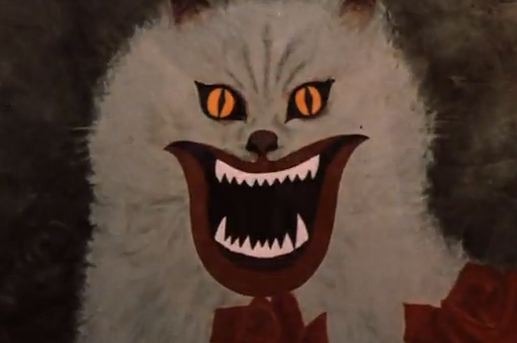
ARRRRGH!!! I make le horror!


September 16, 2012
The Horrors of Indie Publishing
So you are an indie author and your book is now on Amazon. Maybe even Barnes and Noble’s back alley. Awesome. You’re getting some likes, and, Lord willin’, a review. You have built, they will come. Well, maybe, but not straight away.
Nervous tingles creep into your mind as you read the Mainstream Media’s assessment of your (yes, your) place in the annals of literature. It’s grim, yes? Sue Grafton hates your guts. You’re illiterate. You couldn’t write your name in crayon on a sack lunch. Even other indie authors are Quislings with their own volleys of shan’ts and mustn’ts. The best book you could hope to write is entitled Fifty Shades of Lame.
Won’t lie, they do bring up some good points. A recent article churned out by some Bought-and-Paid For broke down why you are forever worthless. They claim the big reasons you suck are:
1. Editing: Typos, bad typesetting, punctuation and grammar – all foul because you haven’t joined the Illuminati.
2. Your cover blows because you aren’t an artist and if you are, it’s because you aren’t a Freemason.
3. Too much too soon: Indie authors churn out seventy-page-long brain farts once every two weeks.
4. You just don’t have the marketing skills.
All right, there are ways around each and every one of these problems. Solutions (which the article failed to provide).
Editing: This is a tough and time-consuming factor, but there are solutions. First off, there is a difference between editing and proofing. Editing irons out subjective foibles like embarrassing dialogue, weak plots and subplots, too many subplots, continuity errors and plot holes – even stupid character names. Proofing involves the technical aspects like grammar, punctuation, typos and typesetting (for readability). If you were ever blessed to be pressed by the Big Six-Six-Six, they normally will only provide editing. You still will need to take care of the proofing on your own. A professional proofing service can charge you about thirty bucks an hour (USD). That’s a lot of cheddar if you have a long book and if you employ an unscrupulous proofer, they may add a few hours to the final bill. Check ripoff report to see if they have a history of doing this. Actually, check ripoff report before you buy anything.
Cheap ways around this are to rely on your personal network. Do you have any friends or family that are secretaries or work in some fact-checking capacity? They can give you a big discount if they say yes. Check local colleges for English majors who are hungry for that all-holy line on the resume. They may even do it for free depending on their appetite for more ink. Always proof your own work and check your proofer’s work once again. They could be insane and have peppered your YA novel with copious four-letter-words. Heh, that would be kind of funny.
The Cover: I hold degrees in design and painting, and although I’m not Peter Saville or Vaughn Oliver, I can construct a passable image to promote my book. This article claimed that ninety percent of blocks to your sales can lie here. Big bottleneck.
I have to disagree on that one. I’ve seen major indie-sellers where the covers are downright eyesores. I’m surprised they don’t have perforation holes trailing down the left-hand side of the image. Nevertheless, they sell like hotcakes. Art-snob that I am, I would go seek a design service if you have no talent for layout or illustration, but if you thought proofing services were expensive – whoa! Design houses can set you back five thousand for just the cover. Best bet is to – can you guess? – cull talent from the local colleges! As I’ve said before, a lot of these guys are starving for resume builders and here, they have a portfolio builder as well. This too can be a marketing boon for you because not only are you pushing your book post-publish, your designer is pushing her cover as well. Free advertising. Win-win.
High Volume, Low Quality: Take your time. Give your readers their money’s worth. I’m not suggesting every book must be a magnum opus, but unless you really want to publish flash fiction and only flash fiction, give your work some respect. A book-a-month only promises thin plots, weak characters, and a waste of time for the reader in the end. They probably won’t buy your next concoction. You’ve lost a retuning customer and that is Bad Business 101. If you are itching to publish, publish, publish, throw up installments on your blog like David Wong did with John Dies at the End.
You’re Not a Salesperson: Personally, I couldn’t sell shaved ice in the Sahara. I’ve just found online marketing services seven months after my release date. Mentally, this is a chokepoint for me because I had just never had an interest in sales. I’ve never had the persuasive spirit. Remember that episode of South Park where the boys had a news program televised at school? It was of high production value and contained integrity; nothing wrong here. It tanked once Clyde began broadcasting inane videos of puppies licking camera lenses. Makes no sense, right? Some people just have IT and others don’t. Chutzpah.
If you are charismatically impaired, try some marketing services. Many of them are online and I found mine once I had begun with Twitter. That really broke the ice for me. I’ll see how this works, but youtube different videos for vlogs pertaining to marketing your work online and even on foot (yes, there is IRL marketing, you know).
Don’t give up. If you give up, you’ve lost me and everyone else. The more you write, the more you hone your craft. I am my own canary in the coal mine, but I love doing this and I won’t be stopped. The 21st Century is the Discouragement Century, but you will only fail yourself if you embrace fear.
Who knows? One of these days, indie publishing might hold the same, elitist attitude that punk rock and indie pop once enjoyed. I remember back in the day when the record store owner would slam me for bringing anything by Big Media to the checkout. You never know. The same might happen for books.



